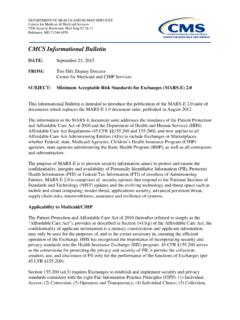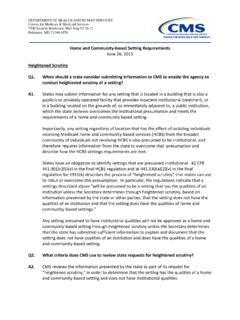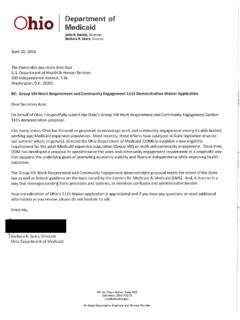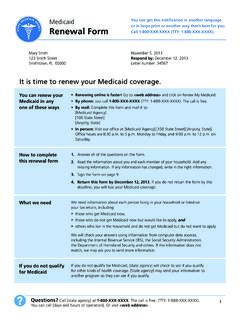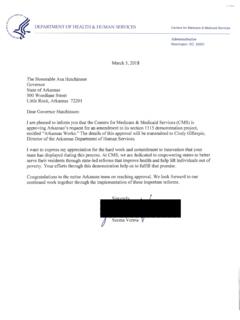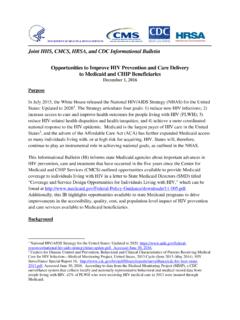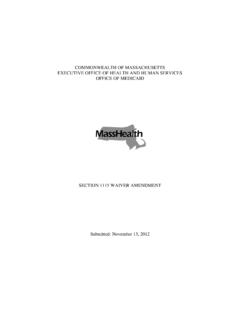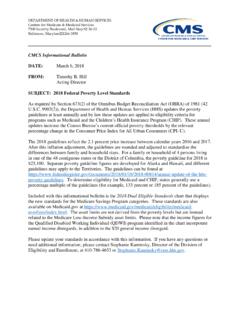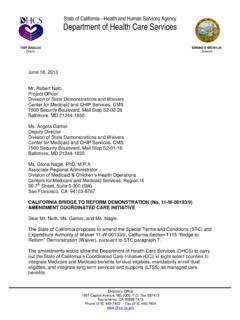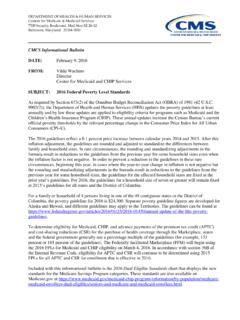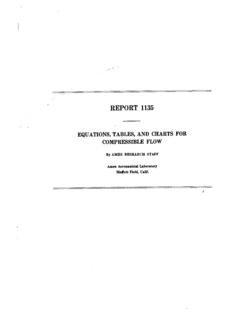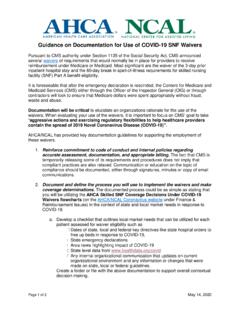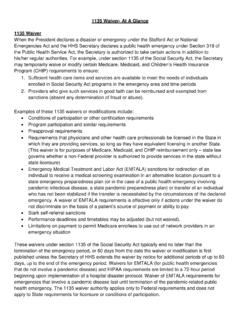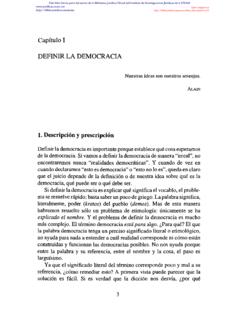Transcription of SHO# 20-004 of Normal State Medicaid, Program (CHIP), and ...
1 DEPARTMENT OF HEALTH & HUMAN SERVICES. Centers for Medicare & medicaid Services 7500 Security Boulevard, Mail Stop S2-26-12. Baltimore, Maryland 21244-1850. SHO# 20-004 . RE: Planning for the Resumption of Normal State medicaid , Children's Health Insurance Program (CHIP), and Basic Health Program (BHP) Operations Upon Conclusion of the COVID-19. Public Health Emergency December 22, 2020. Dear State Health Official: Introduction medicaid and the Children's Health Insurance Program (CHIP) play critical roles in helping states and territories respond to public health emergencies and disasters, including the outbreak of the Novel Coronavirus Disease 2019 (COVID-19). Over the course of the COVID-19 Public Health Emergency (PHE), State medicaid , CHIP, and Basic Health Programs (BHP) adopted many flexibilities offered by the Centers for Medicare & medicaid Services (CMS) to respond effectively to their local outbreaks, including changes to modify eligibility requirements and benefit packages, ensure access to home and community-based services (HCBS), and support health care providers by updating payment rates.
2 In addition to adoption of these flexibilities, states made Program changes to comply with the requirements of section 6008 of the Families First Coronavirus Response Act (FFCRA) (Pub. L. 116-127) as amended by the Coronavirus Aid, Relief, and Economic Security (CARES) Act (Pub. L. 116-136). The FFCRA provides states with a temporary percentage point increase in the federal medical assistance percentage (FMAP) if they meet certain conditions, including a continuous enrollment requirement for most medicaid beneficiaries who were enrolled in the Program as of or after March 18, 2020. Managing the continuing PHE remains a critical priority for CMS, including through our work to extend provider capacity and to prepare for the availability of a vaccine. The purpose of this letter is to provide guidance to states on planning for the eventual return to regular operations, including ending temporary authorities when the PHE concludes, making temporary changes permanent in certain circumstances, procedures for ending coverage and policies authorized under expiring FFCRA provisions, and addressing pending eligibility and enrollment actions that developed during the PHE.
3 1 CMS' expectations related to returning to Normal eligibility and 1 The contents of this document do not have the force and effect of law and are not meant to bind the public in any way, unless specifically incorporated into a contract. This document is intended only to provide clarity to the public regarding existing requirements under the law. Page 2 State Health Official enrollment operations are described in Section VI of this letter. States implemented an array of Program and systems changes to best serve beneficiaries during the PHE, and this guidance will support states in planning for the eventual end of the PHE, ensuring that they are able to transition back to Normal operations when the PHE ends efficiently and in such a way that minimizes burden for beneficiaries. Table of Contents I. Background .. 2. II. Resuming Normal Operations Before the End of the PHE and Continuing Temporary Authorities Beyond the PHE.
4 5. III. Regulatory Requirements for Concluding Temporary Authorities .. 8. IV. Other Requirements for Ending Specific 13. V. Operational and Managed Care Considerations .. 19. VI. Resuming Normal Eligibility and Enrollment Operations: Addressing Pending Eligibility and Enrollment Actions .. 21. VII. Strategies to Support Returning to Routine Operations .. 30. VIII. Program Integrity Considerations .. 35. I. Background During a PHE or disaster, CMS can use various legal authorities to grant states' emergency flexibilities critical to ensuring a State 's ability to respond to the crisis expeditiously and protect and serve the general public. On January 31, 2020, the Secretary of Health and Human Services (HHS) declared a PHE, effective as of January 27, 2020, for the entire United States to aid the nation's healthcare community in responding to COVID-19. On March 13, 2020, the President declared the ongoing COVID-19 pandemic of sufficient severity and magnitude to warrant an emergency declaration for all states, tribes, territories, and the District of Columbia pursuant to section 501(b) of the Robert T.
5 Stafford Disaster Relief and Emergency Assistance Act, 42. 5121-5207 (the Stafford Act ) with a retroactive effective date of March 1, 2020. As part of CMS's ongoing efforts to assist states with addressing the COVID-19 PHE, CMS. released new tools to speed states' access to emergency flexibilities and support State medicaid , CHIP, and BHP agencies during the COVID-19 outbreak. CMS created and released four checklists to help states receive federal waivers and assist them in identifying other authorities in order to implement flexibilities in their medicaid and/or CHIP programs more efficiently. These tools permit states to access emergency administrative relief, make temporary modifications to medicaid eligibility and benefit requirements, relax rules to ensure that individuals with disabilities and older adults can be effectively served in their homes, modify payment rules to support health care providers affected by the PHE, and provide wider access to medicaid - covered services furnished via telehealth.
6 States have the option to request that many of these waivers, State plan amendments (SPAs), and other mechanisms be made effective retroactively, to as early as March 1, 2020, the effective date of the national emergency declared by the President. Many of the options and authorities available to states are described in Appendix A. Page 3 State Health Official States are also able to take advantage of other flexibilities, including emergency information technology (IT) funding, CHIP Disaster Relief SPAs, BHP Blueprint revisions, verification process simplifications, and the flexibility that exists under current regulations related to the timeliness of eligibility determinations and taking final administrative action on fair hearings. As of December 17, 2020, CMS received nearly 700 submissions from states for waivers, SPAs, BHP Blueprint revisions, and other flexibilities, and CMS has approved more than 600 of these submissions.
7 These approvals provide states the flexibility they need to make Program changes to respond to the PHE. Authority Effective and Termination Dates Each temporary authority adopted by states to respond to the COVID-19 PHE is scheduled to automatically sunset upon termination of the PHE or another specified date. Effective and termination dates for the various authorities are provided in the table below. On October 2, 2020, the HHS Secretary renewed the COVID-19 PHE. The renewal took effect on October 23, 2020 and extends the PHE for another 90 days. 2. Authority / Provision Effective Date Termination Date medicaid & CHIP 1135 March 1, 2020 Expires at the end of PHE. Waivers Appendix K of the 1915(c) January 27, 2020 For Appendix K submissions in response to HCBS Waiver Instructions or any later date the COVID-19 PHE, the termination date and Technical Guidance elected by State will be no later than six months after the expiration of the PHE.
8 medicaid Disaster Relief March 1, 2020 Expires at the end of PHE or any earlier SPA for the COVID-19 or any later date approved date elected by State . PHE elected by State CHIP Disaster Relief SPA Start of State or Expires at the end of PHE or at State (specific to COVID-19 federally discretion before end of PHE. 3. PHE) declared emergency BHP Blueprint Revisions March 1, 2020 Expires no later than the end of PHE, unless or any later date a later date is requested and approved by elected by State CMS. medicaid and CHIP Any date elected Expires on a date selected by the State . Disaster Relief MAGI- by State Based Verification Plan Addendum 1115 Demonstration to March 1, 2020 Expires no later than 60 days after end of Respond to the COVID-19 or any later date PHE. PHE elected by State 2 Declaration of 90 day extension of the COVID-19 Public Health Emergency (PHE) on October 2, 2020. 3 Some states have the authority to continue CHIP disaster flexibilities through the end of a State declared emergency.
9 If you have questions about the duration of flexibilities, contact your CMS CHIP project officer. Page 4 State Health Official Legislative Requirements Related to COVID-19. In addition to adoption of the flexibilities described above, states made Program changes to comply with the requirements of section 6008 of the FFCRA, as amended by the CARES Act. Section 6008 of the FFCRA provides a temporary percentage point increase to the FMAP. under the first sentence of section 1905(b) of the Social Security Act (the Act) for states and territories that meet certain conditions, including that they 1) maintain eligibility standards, methodologies, or procedures that are no more restrictive than what the State had in place as of January 1, 2020; 2) do not charge premiums in excess of those in place on January 1, 2020; 4 3). maintain medicaid enrollment for certain beneficiaries through the end of the month in which the PHE ends; and 4) cover COVID-19 testing and treatment services (including vaccines, specialized equipment, and therapies) without cost sharing.
10 5 The increased FMAP is available for qualifying expenditures that were incurred on or after January 1, 2020 and through the end of the quarter in which the PHE, including any extensions, ends. The continuous enrollment requirement in section 6008(b)(3) of the FFCRA prevents states seeking to claim the temporary FMAP increase from terminating eligibility for individuals enrolled as of or after March 18, 2020, through the end of the month in which the PHE ends, even if the individual no longer meets eligibility requirements, unless the person voluntarily disenrolls or is no longer a State resident. The requirements of section 6008 of the FFCRA do not apply to separate CHIPs or to the BHP. Key Dates for Termination of Conditions for FFCRA FMAP Increase Key termination dates for the requirements of section 6008(b) of the FFCRA are described below. FFCRA Section 6008(b) Conditions for Termination Date Percentage Point Increase for FMAP.
